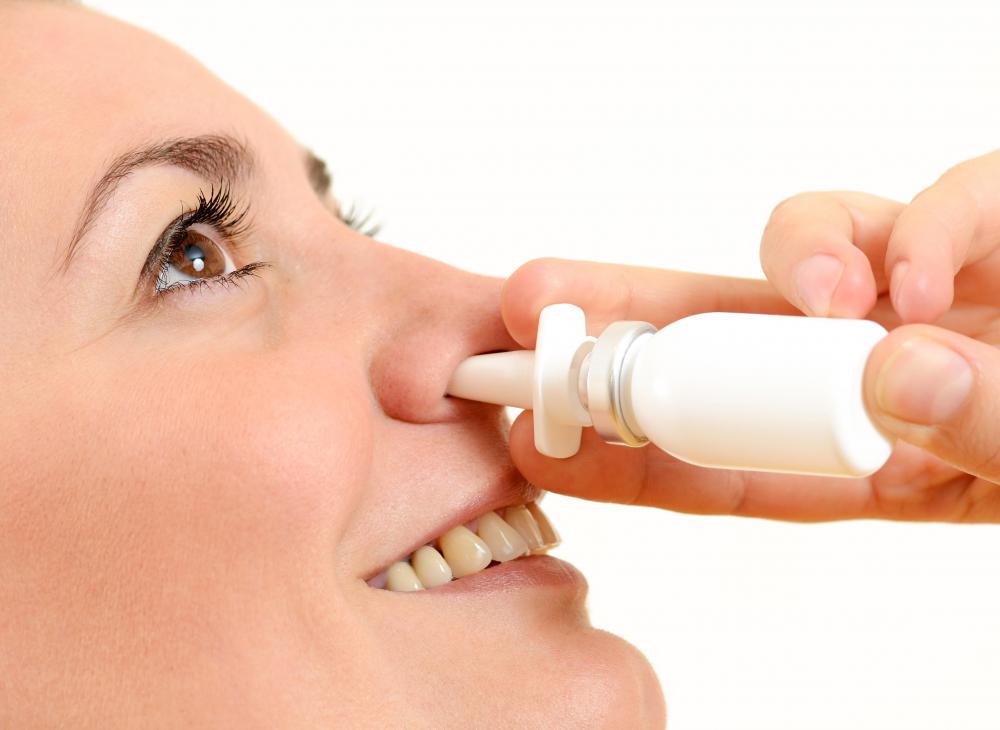At WiseGEEK, we're committed to delivering accurate, trustworthy information. Our expert-authored content is rigorously fact-checked and sourced from credible authorities. Discover how we uphold the highest standards in providing you with reliable knowledge.
How do I Choose the Correct CPAP Setting?
A continuous positive airway pressure (CPAP) machine is used by patients with obstructive sleep apnea to maintain an open airway. The optimal pressure settings are usually determined during an overnight sleep study. After the study, a doctor will review the results and prescribe the appropriate CPAP setting. Durable medical equipment providers will set the pressure according to the doctor’s orders, prior to patient use. Autotitrating machines that automatically adjust pressure are also available, though generally at a much higher cost to the patient.
Patients with sleep apnea experience periods during their sleep cycles where they simply do not breathe. The most common reason for apnea is obstruction of the airway by tissue in the throat. When obstruction occurs, patients will often partially wake and resume breathing. This results in poor quality sleep, exhaustion, and, if untreated, could lead to serious health problems.

A sleep study, or polysomnogram (PSG), is required to diagnose sleep apnea. The diagnostic study takes place in a formal sleep lab with trained technicians on hand throughout the night. Patients arrive in the evening, answer admission questions, and are given a quiet room. Before bed, sensors are positioned on the patient’s body so that technicians can monitor breathing, heart function, brain activity, eye and leg movements, and oxygen levels in the blood.

If sleep apnea is identified, CPAP may be prescribed. At the prescribed CPAP setting, the machine blows pressurized room air via a mask into the patient’s airway. The pressurized air prevents tissues from flapping over the airway and interrupting breathing.
Once diagnosed, the sleep apnea patient will be required to submit to another PSG to determine the CPAP setting for pressure. As in the first test, the patient will be required to spend the night in the sleep lab and will be continuously monitored. In addition to the leads used in the last test, patients will be fitted for a CPAP mask.

During the night, sleep technicians observe data and titrate, or adjust, the pressure of the air flowing through the CPAP mask. Over the course of the night, they will determine the optimal pressure level needed to maintain an open airway for the patient. This pressure setting will be reported to the doctor.
In the case of auto-titrating positive airway pressure (APAP) machines, the pressure is adjusted for each breath as determined by the machine. The American Academy of Sleep Medicine does not recommend the use of this device as a diagnostic tool. APAP may be prescribed, but CPAP is the most common treatment for sleep apnea.

CPAP is a medical device and as such requires a prescription. A durable medical equipment provider will fill the prescription for the CPAP, including arrangement of the CPAP setting to the pressure determined by the sleep study. Periodically, patients should have the pressure checked by the provider to ensure that appropriate settings are maintained.
AS FEATURED ON:
AS FEATURED ON:



















Discuss this Article
Post your comments